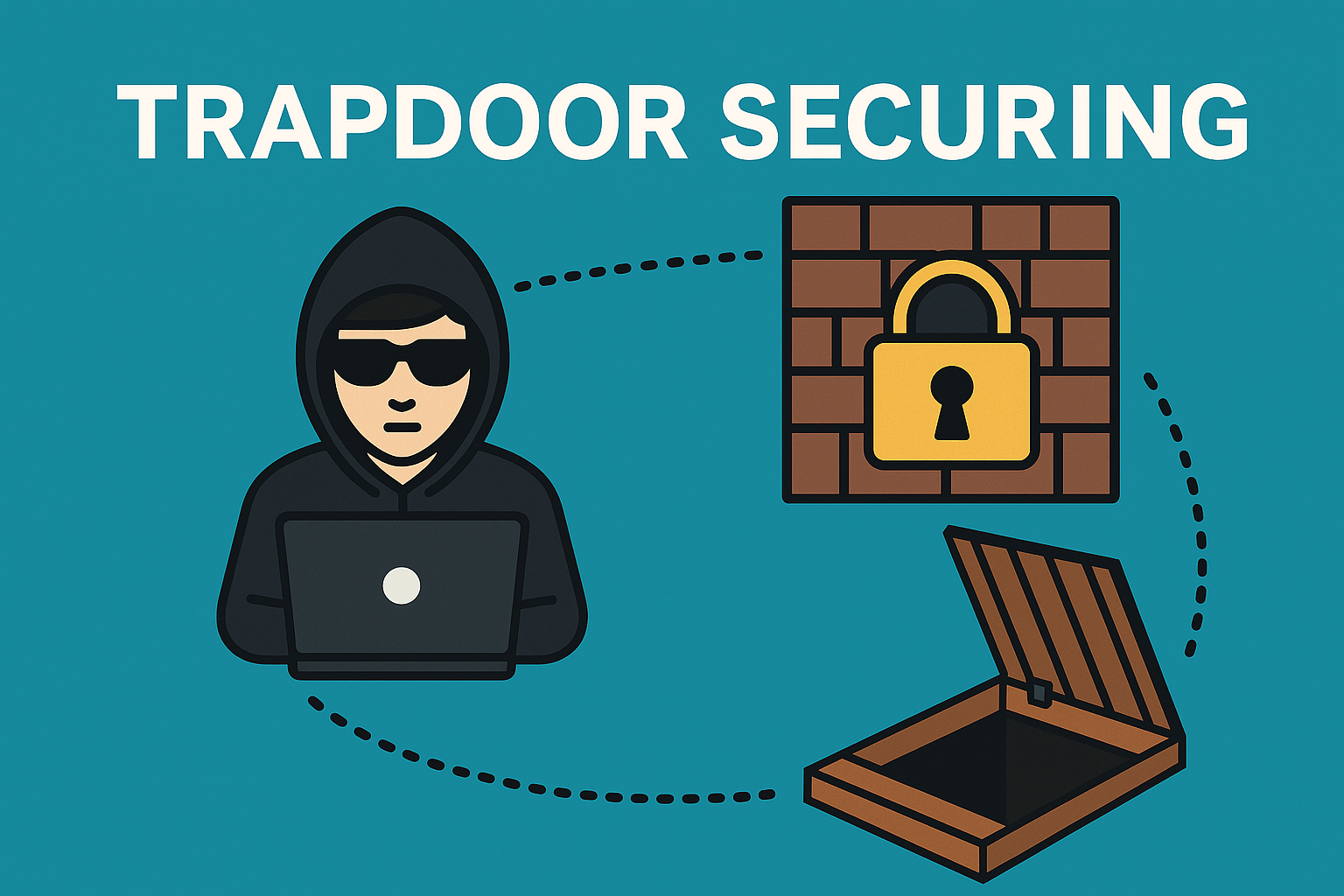Introduction
In cybersecurity, a trapdoor (or backdoor) is a hidden method of bypassing authentication to gain unauthorized access to a system. While some trapdoors are intentionally placed by developers for legitimate purposes (like system recovery), hackers exploit them to infiltrate networks, steal data, or deploy malware.
In this post, we’ll explore:
- What trapdoor securing means
- How hackers exploit trapdoors
- Real-world examples
- Best practices to secure your systems

What Is Trapdoor Securing?
Trapdoor securing refers to the process of identifying, monitoring, and eliminating hidden backdoors in software, firmware, or hardware that could be exploited by cybercriminals.
Trapdoors can exist due to:
- Intentional developer backdoors (e.g., admin access for debugging)
- Unpatched vulnerabilities (e.g., zero-day exploits)
- Maliciously inserted code (e.g., by hackers or supply chain attacks)
Without proper trapdoor securing, organizations risk data breaches, ransomware attacks, and unauthorized system control.
How Hackers Use Trapdoors
Cybercriminals leverage trapdoors in multiple ways:
1. Persistent Access
Once a hacker plants or discovers a trapdoor, they can maintain long-term access even if credentials change.
Example: The SolarWinds hack (2020) involved malware-laced updates that created hidden backdoors in thousands of organizations, including the U.S. government.
2. Malware Deployment
Trapdoors allow hackers to silently install spyware, ransomware, or keyloggers.
Example: The Drovorub malware (linked to Russian hackers) used Linux backdoors to spy on military and corporate networks.
3. Privilege Escalation
Attackers use trapdoors to gain admin rights, bypassing security controls.
Example: The ShadowPad backdoor in NetSarang software allowed attackers to execute remote commands with high privileges.
4. Evading Detection
Trapdoors often mimic legitimate processes, making them hard to detect with traditional antivirus tools.
Example: The Equation Group’s (NSA-linked) DoubleFantasy backdoor remained undetected for years in targeted systems.
Real-World Trapdoor Attacks
1. Juniper Networks Backdoor (2015)
Hackers inserted a trapdoor in Juniper’s firewall software, allowing decryption of VPN traffic. The breach was linked to nation-state actors.
2. Huawei Backdoor Controversy
Multiple governments have accused Huawei of embedding trapdoors in 5G infrastructure, raising concerns about espionage (though Huawei denies these claims).
3. CCleaner Hack (2017)
Attackers compromised CCleaner’s updates, distributing malware to over 2 million users via a hidden backdoor.
Best Practices for Trapdoor Securing
1. Regular Code Audits & Penetration Testing
- Conduct static and dynamic code analysis to detect hidden backdoors.
- Hire ethical hackers for penetration testing.
2. Secure Software Development Lifecycle (SDLC)
- Follow secure coding practices (OWASP guidelines).
- Use checksums & digital signatures to verify software integrity.
3. Network Segmentation & Zero Trust
- Limit lateral movement by segmenting networks.
- Implement Zero Trust Architecture (ZTA) to enforce strict access controls.
4. Patch Management
- Regularly update software to fix known vulnerabilities.
- Monitor CVE databases for newly discovered backdoors.
5. Behavioral Monitoring & AI-Based Detection
- Use UEBA (User and Entity Behavior Analytics) to detect unusual access patterns.
- Deploy AI-driven security tools to identify stealthy backdoor activities.
Conclusion
Trapdoor securing is critical in preventing cyberattacks that exploit hidden backdoors. By implementing robust security measures—code audits, Zero Trust, AI monitoring, and strict patch management—businesses can defend against these stealthy threats.
Stay vigilant, audit your systems, and ensure your cybersecurity strategy is strong to keep hackers out!





